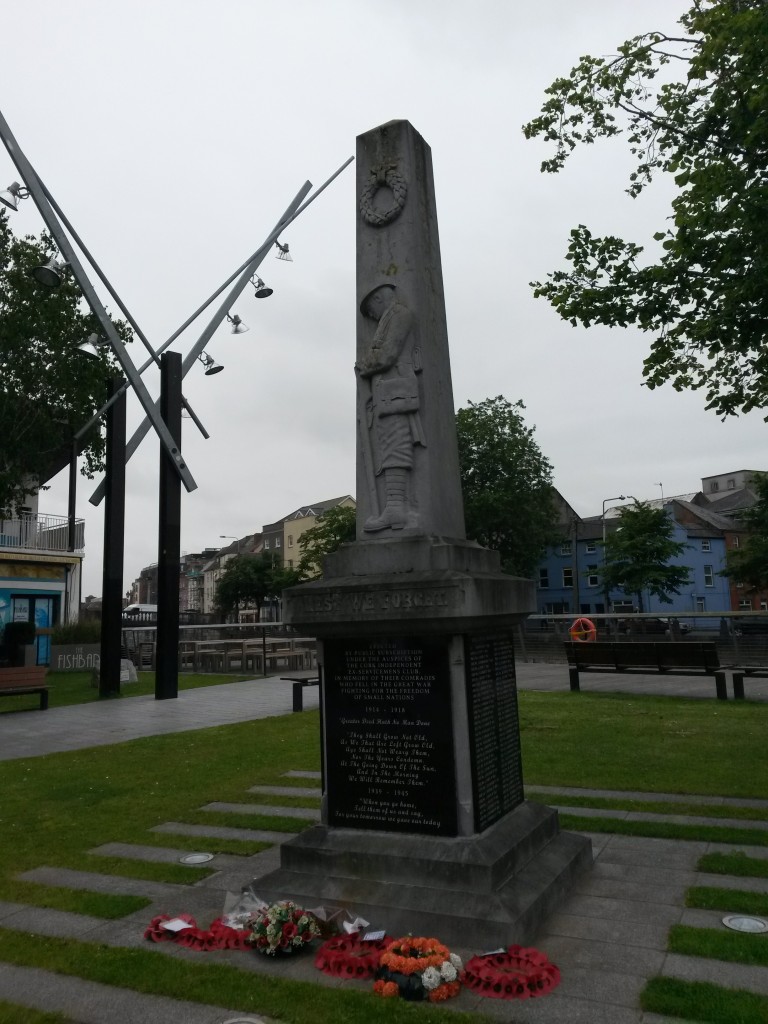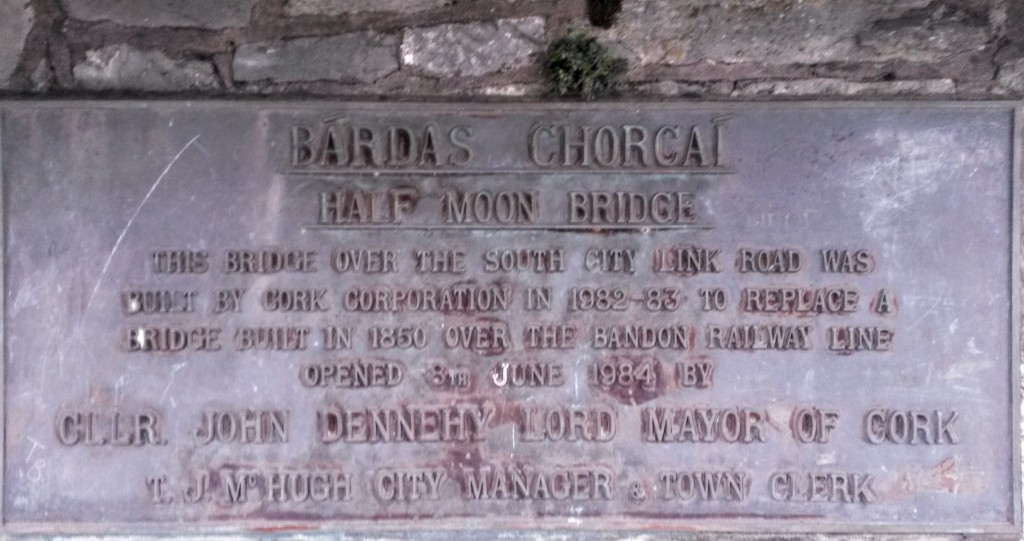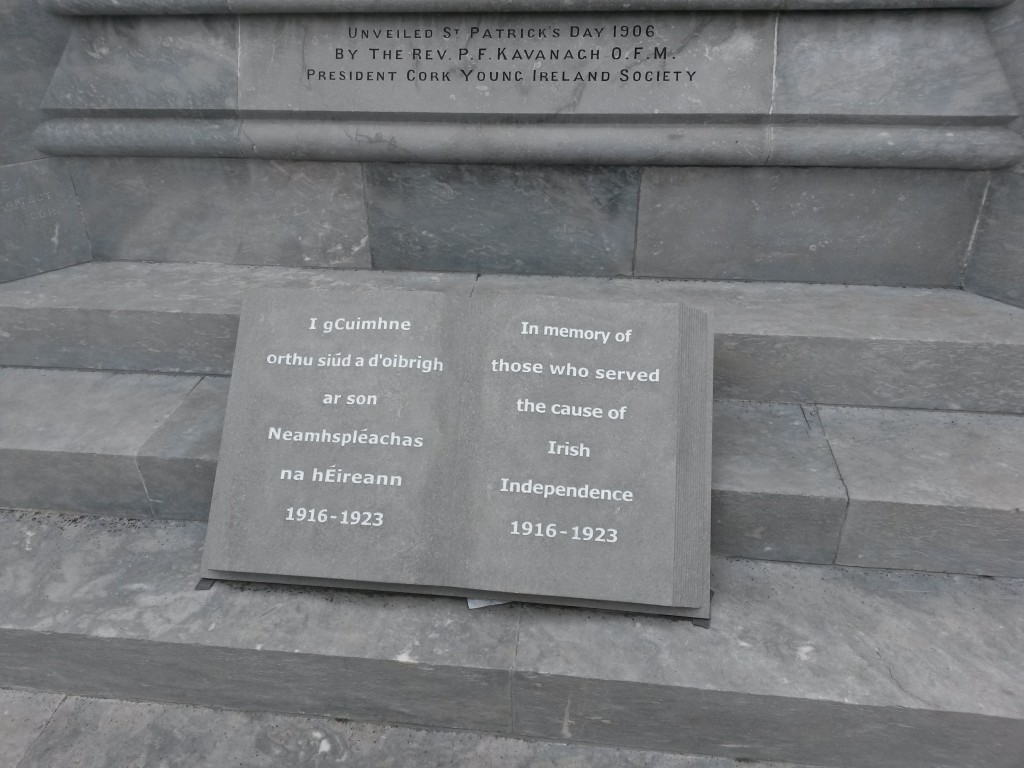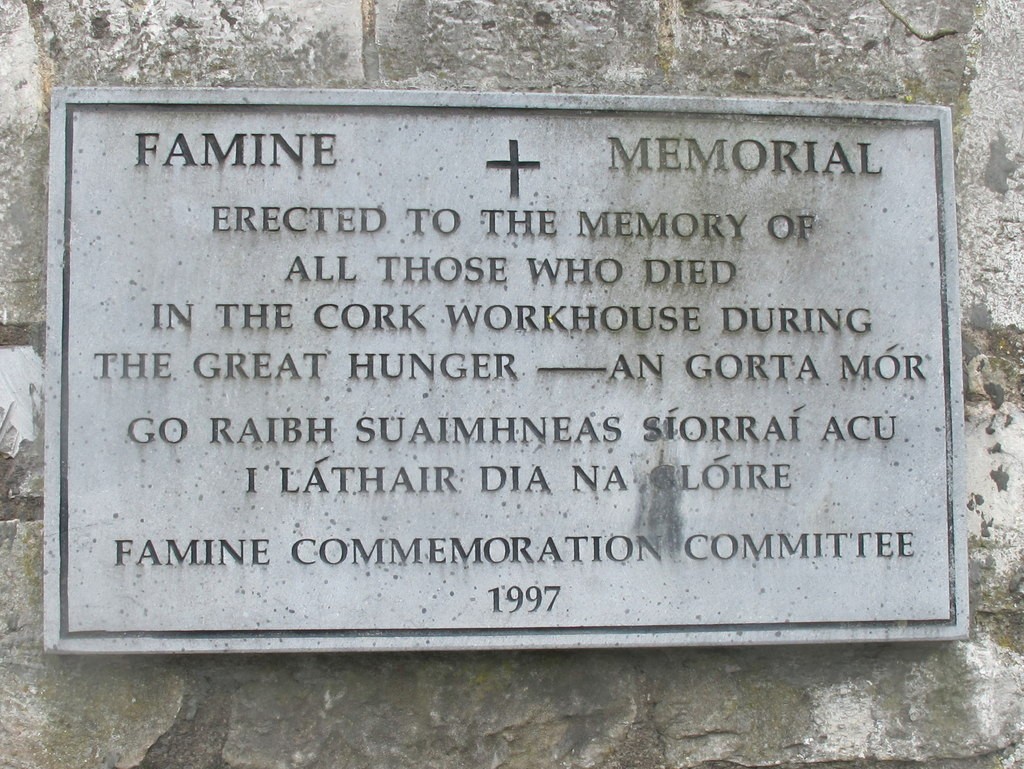Just now, it seems that war commemorations are to the fore of public consciousness. Here in Ireland, the preparations for marking Easter Rising 1916 are beginning to gather pace. Since the Rising was almost entirely a Dublin-based event, people in the provinces are pondering how to commemorate a national event in a way that connects with local history. Of the 39 documented Easter Rising memorials in Ireland, 28 are in Dublin city. And since we have already named stations, roads, streets and housing developments after famous rebels, the search for other permanent memorials is underway. When we commemorated World War I, it was easy to renovate old war monuments, such as the cenotaph in Cork city.

However, statues of 1916-era fighters such as Michael Collins are already well-kept, so what can be done to satisfy the desire to say something about the Easter Rising? Cork County Council held public consultations on the matter, which were attended by 200 people. From the suggestions made, it is clear there is an appetite among this audience for memorialisation in a very specific form: plaques. Three separate plaques were proposed for Fermoy, while the first recommendation from the meeting in Mallow was simply ‘Commemoration Plaques’. 1
Plaques are ubiquitous in the Irish streetscape, but historical ones are far outnumbered by ‘official opening’ plaques. Every piece of major infrastructure, most shopping centres, every school and hospital has a plaque marking the politician that ‘officially’ opened it. The headstone-style markers next to busy motorways are particularly curious examples of official Ireland’s passion for plaques: unreadable, inaccessible memorials to political good deeds. (I cannot photograph an example, for obvious reasons.) Some places even have more multiple plaques, as in the case of Haulbowline Island bridge, where Simon Coveney’s name is now above two older plaques marking Sean Lemass’ moment with the little velvet curtains.
.@simoncoveney officially opens the refurbished Haulbowline Bridge #Cork. It leads to .@defenceforces naval base HQ pic.twitter.com/JxJmakUe1t
— Eoin English (@EoinBearla) May 1, 2015
Sadly, many of these plaques are uninspiring and unremarkable, as this one from 1981 on Cork’s Half Moon Bridge shows.

Cultural theorists can have plenty of fun with these efforts to inscribe and possess the landscape; it is surely no coincidence that these plaques are frequently tagged with graffiti. But most ordinary citizens recognise that these official openings are photo opportunities for politicians. So why would those outside the political sphere think plaques are the answer to our commemoration needs? I would like to suggest that a plaque addresses a number of needs and is often the least divisive option.
Sculpture and statuary is very expensive, must be commissioned years in advance and can take up street space. Then there is the vexed question of who to put on the plinth, and who to ignore. Historically, the war memorials that have populated the Irish streetscape featured uniformed men: from Nelson’s pillar in Dublin to the World War I cenotaphs, men in military dress were the iconography of heroism in war. But now that the contribution of women to the Easter Rising is recognised, a man with a gun is no longer an appropriate symbol. If the memorial is to be non-figurative, the problem of artistic taste arises. What if an artist creates something that nobody locally appreciates or understands? Or worse, what if the art work becomes a public eyesore due to littering and poor maintenance?
In contrast, a plaque is often unobtrusive. Placed on a building, it does not take up physical space, and because of this, it does not easily offend. Only those who take the time to stop and read will know about the plaque’s existence. This is not to argue that choosing an inscription is an apolitical or simple matter. This stone book, recently added to the National Monument in Cork city, is an attempt to include everyone that may deeply offend some.

The date range – 1916-23 – includes anyone who claimed to be fighting for Irish freedom, from Easter 1916 to the end of the Civil War in May 1923. Since this includes self-declared enemies of the new 26-county Irish state, a state still in existence today, the inscription is attempting to square the freedom fighter/terrorist circle. Only time and the looming commemoration of the 1919-21 War of Independence will tell if it succeeds in uniting or dividing opinion.
Of course, no one may even notice this or any other 1916 plaque. The last orgy of commemoration to change the Irish landscape arose during the 150th anniversary of the Great Irish Famine. The large-scale sculptures that emerged, such as the memorial on Dublin’s Custom House Quay and the Famine Ship in Co Mayo, are now iconic, but smaller memorials have struggled to make an impression on the national consciousness. In Cork city, this plaque to victims of the Great Famine was placed on the walls of St Finbarr’s hospital.

Unfortunately, it presumes that a casual passerby would know that the hospital was once the Cork Union workhouse. A small textual memorial cannot give much information, yet information is essential to participate in the commemorative act. Memorials that dare to create an iconography or visual language may well communicate better with an audience ignorant of – and largely disinterested in – historical facts.
In Cork, the search for appropriate imagery and text will be short, since community groups have just four weeks to submit proposals to the 1916 Centenary Fund. As the fund is lamentably small, the committee envisage granting money ‘for events and projects that range in cost from a few hundred euro to a few thousand.’ 2 Thus every local area can secure a small amount of money, and nobody ends with a bigger, more expensive memorial than the neighbouring parish. Perhaps it will all end gloriously, but I foresee a plague of plaques. It would be a shame to run out of wall space before the commemoration of the War of Independence, a conflict where British government forces torched the centre of Cork city and, ambushes and reprisals convulsed the countryside. Cork communities should have something substantial to say about memorialising war, but plaques alone seem a paltry response to violence, fear and death.
If you see a new war memorial in Ireland, why not submit it to www.irishwarmemorials.ie? Let’s ensure that the physical acts of remembering are saved for posterity, future scholarship and the occasional eyeroll.